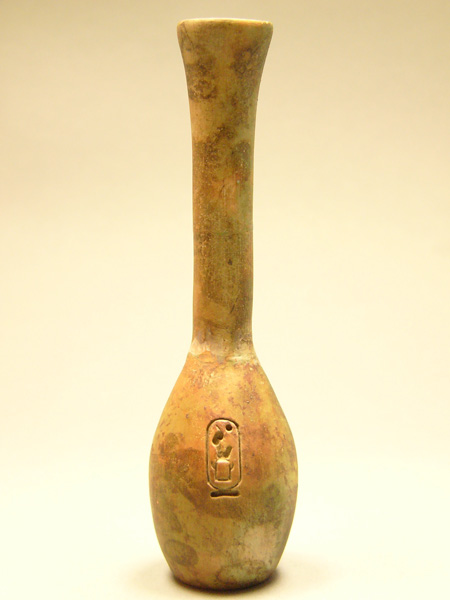What Does an Egyptian Pharaoh Smell Like?

She may have ruled like a man, but Egyptian queen Hatshepsut still preferred to smell like a lady. The world may be able to get a whiff of that ancient royal scent when researchers complete their investigation into the perfume worn by Hatshepsut, the powerful pharaoh-queen who ruled over ancient Egypt for 20 years beginning around 1479 B.C. Analyzing a metal jar belonging to the famous queen , the team from the Bonn University Egyptian Museum in Germany recently found residue thought to be leftovers from Hatshepsut's own perfume. Their next step will be attempting to "reconstruct" the scent, which was likely made from pricey incense imported from present-day Somalia. Though funerary objects belonging to Egypt's ancient rulers fill museums around the world, if successful, this will be the first time that a pharaoh's perfume is recreated, the researchers said. Hatshepsut stepped in as one of ancient Egypt's rare female leaders when her half-brother and husband, Pharaoh Thutmose II, died without an adult male heir. She was meant to rule as a co-regent only until her stepson Thutmose III matured, but she effectively took the reins and was recognized as the pharaoh by the royal court and religious officials until her death in 1457 B.C., Egyptologists say. Despite her gender, Hatshepsut's two decades as pharaoh are considered an incredibly successful time. Ruling like a man, historians say, she mounted at least one military campaign but kept Egypt largely peaceful, and commissioned several impressive building projects. Hatshepsut is best known, perhaps, for reopening southern trade routes that had been interrupted by war, increasing the wealth of her empire. She famously launched a naval caravan to the ancient land of Punt — what today is called the Horn of Africa — bringing back ships laden with myrrh, frankincense and, notably, incense plants which were then replanted near her funerary temple (commonly under construction well before a pharaoh's death), according to ancient documents. "Incense was extremely valuable in ancient Egypt and was used only in temples and for living gods (such as the king)," said Michael Höveler-Müller, curator of the Bonn University Egyptian Museum. It is this incense that researchers suspect they have found in a filigree container bearing the queen's name. Using powerful X-rays, the remains of a dried-out fluid were discovered at the bottom of the flacon. Pharmacologists will now analyze the residue and break it into its constituents, in the hopes of putting the scent back together, 3,500 years after Hatshepsut last wore it. "I was looking for the perfume residue, because I had one good hint — the form of the bottle is a well-known perfume-bottle, which was originally closed," Höveler-Müller told LiveScience. The use of perfume was common among high-society ladies in ancient Egypt, historians say, but even they didn't use the rare incense plant, Höveler-Müller. "Perfume (in ancient Egypt, always some kind of oil) was a product for the upper class only. The Egyptians used local blossoms, fruits and aromatic wood for that (they put it into non-smelling oil, until the scent was "accepted" by the oil)," said Höveler-Müller. Hatshepsut's love of incense was likely connected to her desire to project power, a tenuous mission as one of just a handful of female pharaohs in Egyptian history. Many paintings and statues of the pharaoh-queen show her dressing like a man in full royal regalia, and some even depict her with a beard. Wearing such an expensive product on her body, one usually reserved for tributes to gods and kings, was another way to cement her status as Egypt's supreme ruler, Egyptologists believe. Queen Hatshepsut also made news in 2007, when her mummy was positively identified by Egyptologists using DNA and dental X-rays, making her the first ancient Egyptian royal identified since King Tutankhamen (Tut) in 1922.
- Video – The Screaming Mummy, Tortured Among Pharaohs?
- Gallery: Seven Ancient Wonders of the World
- Quiz: The Artifact Wars
Heather Whipps is a freelance writer with an anthropology degree from McGill University in Montreal, Canada. Her history column appears regularly on LiveScience. [History Column archive]
Sign up for the Live Science daily newsletter now
Get the world’s most fascinating discoveries delivered straight to your inbox.

